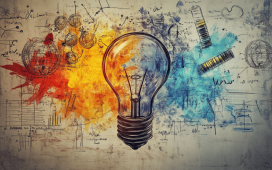We’re thrilled to announce the return of GamesBeat Next, hosted in San Francisco this October, where we will explore the theme of “Playing the Edge.” Apply to speak here and learn more about sponsorship opportunities here. At the event, we will also announce 25 top game startups as the 2024 Game Changers. Apply or nominate today!
Mercedes-Benz said it will create digital twins for its real-life factories as part of a partnership with Nvidia to make manufacturing more efficient.
Using Nvidia’s Omniverse platform, the car maker will create virtual, metaverse-like representations of its car factories before it builds them in real life. Such “digital twins” can save on costs, enable companies to test ideas and then revise them, and collect real-life data that can inform future designs, said Jörg Burzer, member of the board of the Mercedes-Benz Group, in a press briefing.
Nvidia has been talking up the Omniverse as a kind of onramp for the metaverse for years, and it is promoting Universal Scene Description (USD) — originally created at Pixar — as an open metaverse standard for sharing 3D files across different companies and industries.
While the metaverse has stalled a bit on the consumer side (Meta is still trying to get us into virtual reality games and work environments with its VR headsets), the enterprise metaverse for engineers is thriving.
Event
GamesBeat Next 2023
Join the GamesBeat community in San Francisco this October 24-25. You’ll hear from the brightest minds within the gaming industry on latest developments and their take on the future of gaming.
Mercedes-Benz said it will use digital twins — with help from Omniverse and USD — for production applications to design, collaborate, plan and operate manufacturing and assembly facilities.
Mercedes-Benz’s new production techniques will bring its next-generation vehicle portfolio into its manufacturing facilities operating in Rastatt, Germany; Kecskemét, Hungary; and Beijing, China — and offer a blueprint for its more than 30 factories worldwide.

This “digital first” approach enhances efficiency, avoids defects and saves time, marking a step-change in the flexibility, resilience and intelligence of the Mercedes-Benz MO360 production system, the companies said.
The digital twin in production helps ensure Mercedes-Benz assembly lines can be retooled, configured and optimized in physically accurate simulations first. The new assembly lines in the Kecskemét plant will enable production of vehicles based on the newly launched Mercedes Modular Architecture that are developed virtually using digital twins in Omniverse.
By leveraging Omniverse, Mercedes-Benz can interact directly with its suppliers, reducing coordination processes by 50%. Using a digital twin in production doubles the speed for converting or constructing an assembly hall, while improving the quality of the processes, according to the automaker.
“Using Nvidia Omniverse and AI, Mercedes-Benz is building a connected, digital-first approach to optimize its manufacturing processes, ultimately reducing construction time and production costs,” said Rev Lebaredian, vice president of Omniverse and simulation technology at Nvidia, in a virtual press event today.
In addition, the introduction of AI opens up new areas of energy and cost savings. The Rastatt plant is being used to pioneer digital production in the paint shop. Mercedes-Benz used AI to monitor relevant sub-processes in the pilot testing, which led to energy savings of 20%.
Supporting new software systems

Next-generation Mercedes-Benz vehicles will feature its new operating system “MB.OS,” which will be standard across its entire vehicle portfolio and deliver premium software capabilities and experiences across all vehicle domains.
Mercedes-Benz has partnered with Nvidia to develop software-defined vehicles. Its fleets will be built on Nvidia Drive Orin and Drive software, with intelligent driving capabilities tested and validated in the Nvidia Drive Sim platform, which is also built on Omniverse.
The automaker’s MO360 production system will enable it to produce electric, hybrid and gas models on the same production lines and to scale the manufacturing of electric vehicles. The implementation of MB.OS in production will allow its cars to roll off assembly lines with the latest versions of vehicle software.
“Mercedes-Benz is initiating a new era of automotive manufacturing thanks to the integration of artificial intelligence, MB.OS and the digital twin based on Nvidia Omniverse into the MO360 ecosystem,” said Burzer. “With our new ‘Digital First’ approach, we unlock efficiency potential even before the launch of our MMA models in our global production network and can accelerate the ramp-up significantly.”
Flexible factories of the future

Avoiding costly manufacturing production shutdowns is critical. Running simulations in Nvidia Omniverse enables factory planners to optimize factory floor and production line layouts for supply routes, and production lines can be validated without having to disrupt production.
This virtual approach also enables efficient design of new lines and change management for existing lines while reducing downtime and helping improve product quality. For the world’s automakers, much is at stake across the entire software development stack, from chip to cloud.
Omniverse collaboration for efficiencies
The Kecskemét plant is the first with a full digital twin of the entire factory. This virtual area enables development at the heart of assembly, between its tech and trim lines. And plans are for the new Kecskemét factory hall to launch into full production.
Collaboration in Omniverse has enabled plant suppliers and planners to interact with each other interactively in the virtual environment, so that layout options and automation changes can be incorporated and validated in real time. This accelerates how quickly new production lines can reach maximum capacity and reduces the risk of re-work or stoppages.
Virtual collaboration with digital twins can accelerate planning and implementation of projects by weeks, as well as translate to significant cost savings for launching new manufacturing lines.
The move is part of a broader effort by Mercedes-Benz to adopt AI, digital twins, and a production makeover, said Burzer, in a press briefing. Four years ago, the company launched its flexible digital production ecosystem, using real-time data and networking with 30 plants around the world. It’s part of an effort to produce electric, hybrid and combustion car models on one assembly line to meet demand.
“We’ve introduced the digital twin in production,” Burzer said. “The digital twin allows us to retool and ramp up production of the new MO360 platform in our factories right around the corner” in Germany, Hungary and China. The company designed a virtual factory in Russia, but it will not proceed with that and instead will use it as the blueprint for its global production network.
“In addition, the production of artificial intelligence opens up new possibilities and opportunities for energy and cost savings,” said Burzer.

That will help the company meet its sustainability goals. It is adding digital production to its paint shop, and AI helps yield energy efficiency gains of 20% or more in the painting process.
Lebaredian said, “At Nvidia, our soul is accelerated computing. The hardest problems in computing always come down to simulation of the real world.”
Nvidia’s chips are dedicated to simulating the nature of worlds in design, architecture, manufacturing, and video games. And now they’re being used to simulate factories using digital twins, as well as intelligence itself, with AI.
“The vision is that the physical reality becomes the representation of the digital, rather than the digital being a representation of the reality,” Burzer said.
To design the twins, the companies look at the manufacturing process from end to end. It works out the best way to configure a factory using digital objects meant to simulate things in the real world. And it opens the digital twins to partners who can provide equipment, robots and other real products that will go into the factories so that the plans will work with what they make.
“They do not even need to physically visit the location to take measurements,” Burzer said. “They can do that in the digital world. That leads to much faster iterations, to a much shorter ramp up time. In fact, we assume that the coordination effort can be reduced by 50%. And to underline what we’ve heard from Jorgen already, this is not just about geometry, and hardware. It does include the software features, the software design, all the functionality that we find in the equipment, so you can do testing of an entire assembly line, including the software controls, digitally.”
That pays off as you don’t have to wreck things in real life as you work out the kinks. And as more companies create their own digital twins, a wider network of assets can become available so that partners can share the simulations and the data with each other for mutual benefit. Eventually, I suppose that is how we’ll get our enterprise or industrial metaverse.
“Once we can aggregate this world, Omniverse then provides a framework to build a simulator that can scale on our most advanced computers,” Lebaredian said. “So that we have an opportunity to turn the real world into a software problem. By taking all of the things that are in the real world that are built from atoms, and turning them into a digital representation, we now have the opportunity to iterate on our designs, and to evolve our systems that are based in the real world by doing experiments inside the software world. This is fundamentally what Omniverse is providing.”
While it is using the overall system to monitor quality, the company is not using the digital twin system for supervision of workers, Burzer said. The company uses Nvidia hardware and other software on premises in its data center in Stuttgart, Germany. But it is in the process of moving the digital twins to the cloud. The first task is getting the digital twin done, then you can share it out with other locations. The company believes it has been able to boost the productivity of its employees through the digital twins. Meanwhile, it has been careful about meeting privacy requirements.
“I think this is one of the most important topics — democratization of data,” Burzer said. “Also, with this artificial intelligence, what you can do is you can enable each and every colleague working at the line, team members, to have access to data.”
The digital twins have nothing to do with workforce optimization, or reducing the number of jobs, Burzer said.
“It’s a completely different scope,” he said. “It’s about quality and efficiency. It’s about getting the waste out of the system.”
If something goes wrong, it doesn’t take days for people to figure it out. It can happen much more quickly with digital twins and real factories with sensors, thanks to transparency.
While digital twins enable factories to be designed in cookie-cutter manner, it’s not that simple in real life, as there are different regulations in different countries where changes will be mandated.
GamesBeat’s creed when covering the game industry is “where passion meets business.” What does this mean? We want to tell you how the news matters to you — not just as a decision-maker at a game studio, but also as a fan of games. Whether you read our articles, listen to our podcasts, or watch our videos, GamesBeat will help you learn about the industry and enjoy engaging with it. Discover our Briefings.










